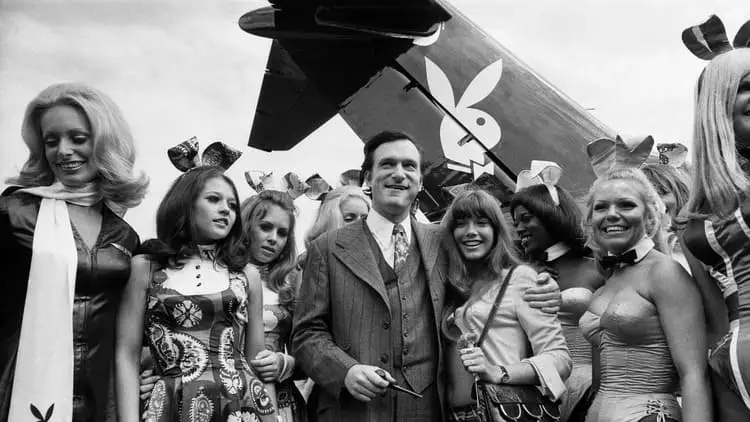In the golden age of the Jet Set, when glamour took to the skies and luxury knew no bounds, one man pushed the concept of “traveling in style” to a whole new level.
That man was Hugh Hefner, the legendary founder of Playboy, and his personal flying palace was none other than the now-iconic DC-9 jet, famously known as The Big Bunny.
This isn’t just a story about a plane—it’s about a moment in history when pop culture, aviation, and one of the most flamboyant lifestyles of the 20th century all collided mid-air.
Buckle up as we take you on a fascinating, friendly, and fun tour of the Big Bunny.
A Jet Like No Other
Back in the late 1960s, Hugh Hefner had already transformed Playboy into a global empire.But for Hef, living large on land wasn’t enough.
He wanted to take the Playboy lifestyle to the skies. So in 1969, he bought a sleek, state-of-the-art DC-9-32 jet for around $5.5 million—which would be about $40 million today—and turned it into a flying Playboy Mansion.
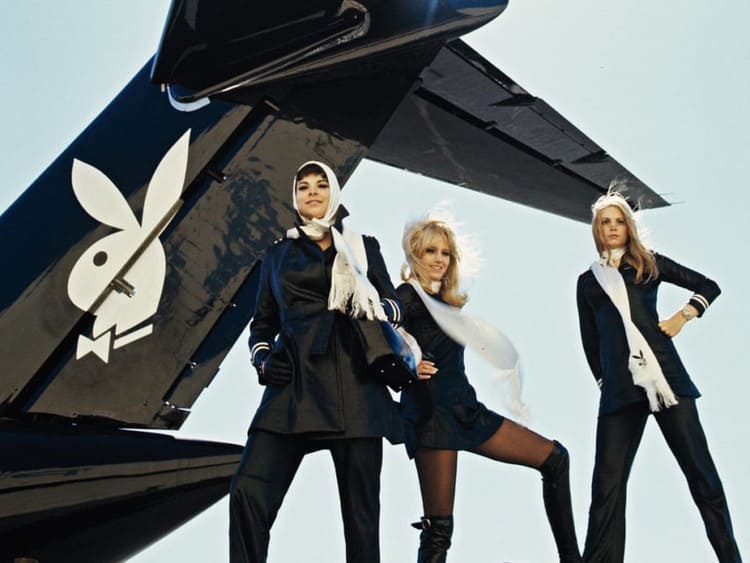
But this wasn’t just a plane.
It was a bold, flying symbol of the Playboy brand, covered in jet-black paint with the iconic white bunny logo on the tail. Hefner proudly noted, “No plane had ever been painted black before. It was like the Ugly Duckling.”
And with that, The Big Bunny was born.
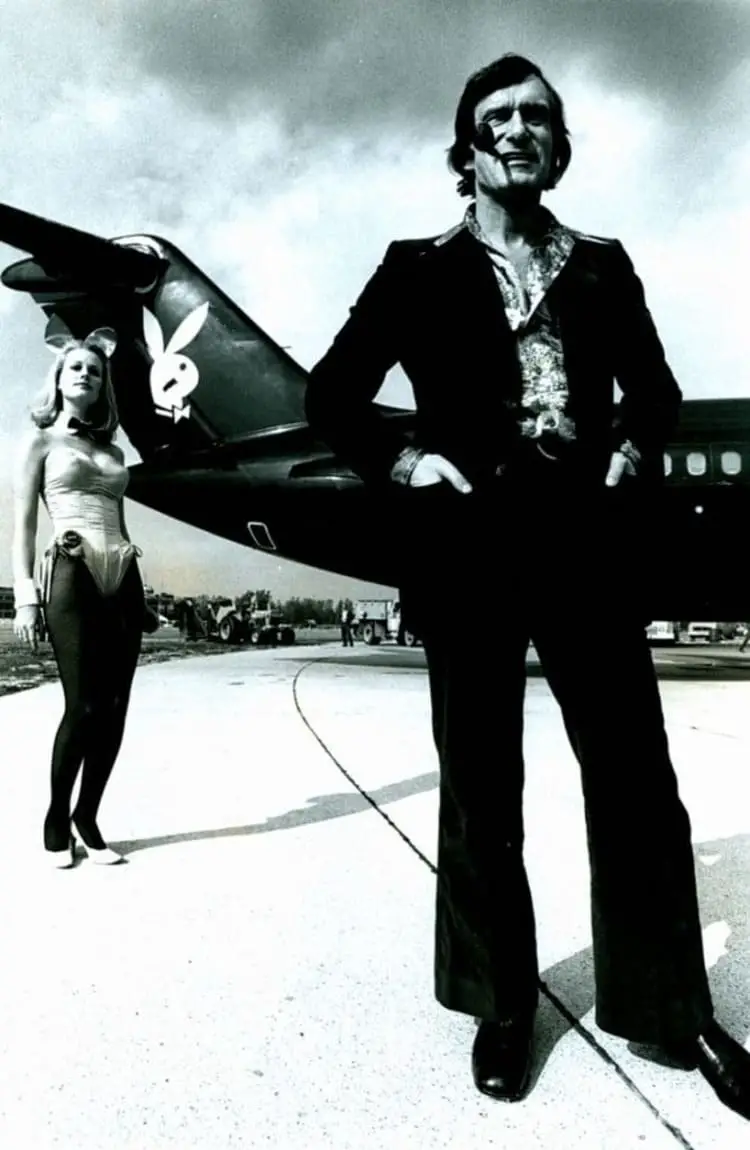
Inside the Flying Fantasy
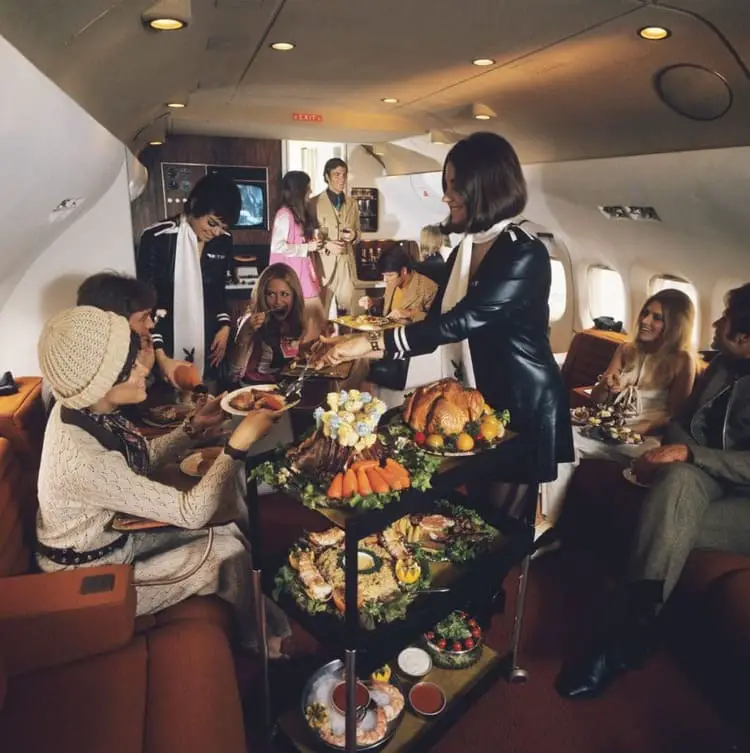
The interior of the Big Bunny was designed to impress—and indulge.
From the moment you stepped on board, it was clear that this wasn’t your average airplane.
The cabin was pure 70s hedonistic glam, decked out in leather, fur, and futuristic Scandinavian design.
The aircraft was configured to hold just 38 passengers, giving everyone plenty of room to stretch out in luxury. It featured:
- A spacious lounge area
- A dining room for elegant meals at 35,000 feet
- Multiple bathrooms with showers
- A theater and disco room complete with a dance floor
- And, of course, Hefner’s personal suite with a circular bed covered in fur, a private bathroom, and a futuristic command console under the window.
This wasn’t just for show. Hefner described it as “literally a flying apartment,” and it quickly became his home in the sky.
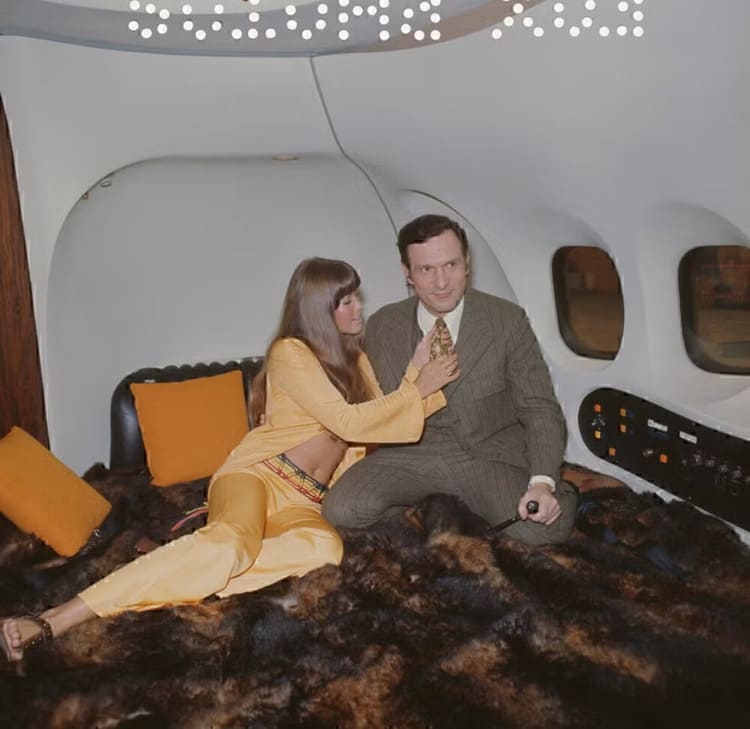
The Jet Bunnies: Playboy’s Most Stylish Flight Crew
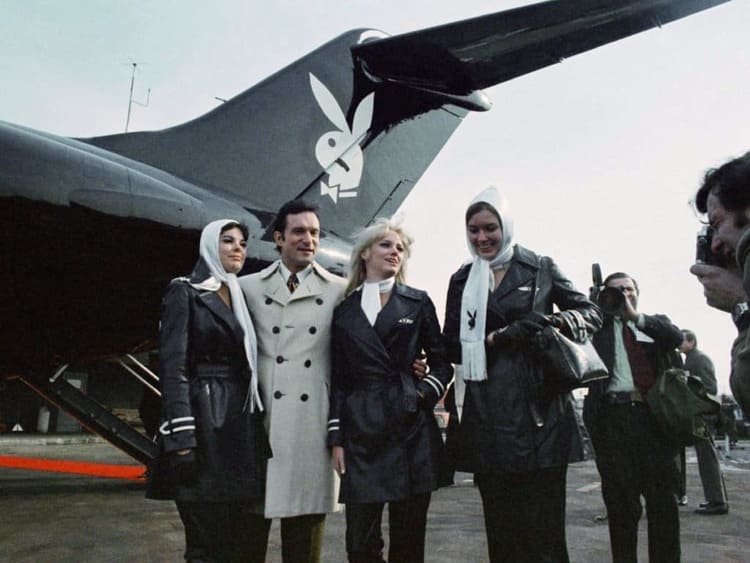

One of the Big Bunny’s most talked-about features wasn’t just the decor—it was the crew.
Handpicked from Playboy Clubs in Los Angeles and Chicago, the flight attendants, affectionately called Jet Bunnies, were more than just staff—they were part of the brand.
Trained by Continental Airlines and styled by designer Walter Holmes, these women wore black leather mini-dresses, white aviator scarves, knee-high go-go boots, and yes, bunny ears and tails.
The image was unforgettable.
They helped create an atmosphere that was equal parts party, prestige, and Playboy polish.
Where Elvis, Cher, and Roman Polanski Partied at 35,000 Feet
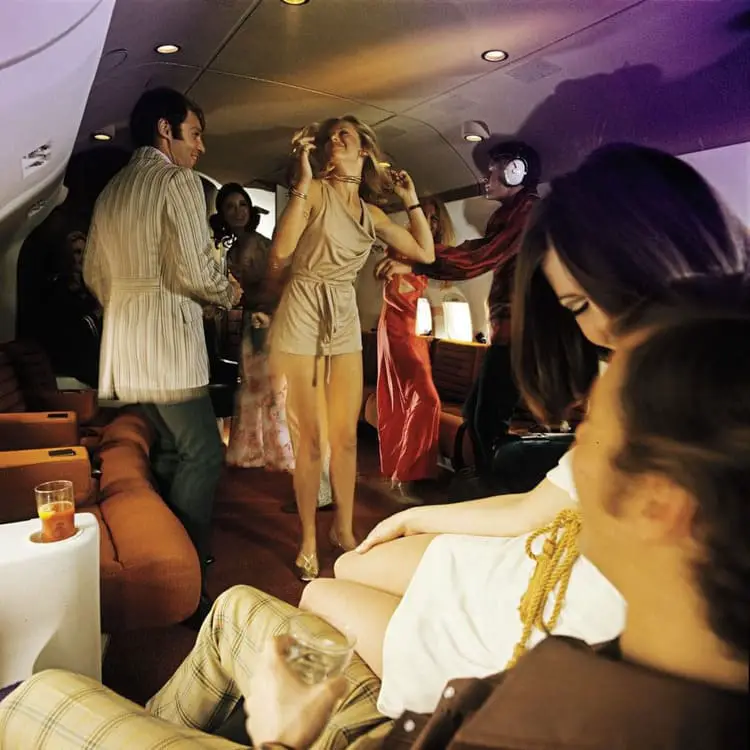
While the plane was technically designed for business and comfort, let’s be honest—Big Bunny was built for fun.
The plane hosted lavish parties in the sky, with celebrity guests including director Roman Polanski, artist LeRoy Neiman, and poet Shel Silverstein, all of whom contributed to the jet’s vibrant atmosphere.
Elvis Presley and Sonny & Cher reportedly leased the jet for their concert tours, adding to its star-studded legacy.
One notable journey involved Hefner, his then-girlfriend Barbi Benton, and film critic Gene Siskel flying to London to support the troubled production of Polanski’s Macbeth.
After the shoot, the group celebrated in St. Tropez aboard a rented yacht, capturing the true essence of jet-set living.
Hefner loved the freedom and privacy the plane gave him. “I loved the convenience,” he once said. “It was an apartment in the air—with a bedroom, living room, dining room, and disco.”
And it wasn’t just about pleasure.
The plane also doubled as Hefner’s traveling office, complete with everything he needed to run his empire from 35,000 feet.
The End of an Era

But even the most glamorous flights must eventually come in for landing.
In 1971, Hefner purchased the now-iconic Playboy Mansion in Los Angeles, and his travel between the West Coast and the Playboy headquarters in Chicago started to taper off.
As the cultural tides shifted in the mid-1970s and Playboy faced growing competition, the cost of maintaining a private luxury jet—with its small passenger capacity and high upkeep—became harder to justify.
In 1976, the Big Bunny, officially registered as N950PB, was sold to Omni Aircraft Sales.
Within a month, it was transferred to Línea Aeropostal Venezolana, a commercial airline in Venezuela.
Gone were the leather lounges, fur throws, and cocktail carts—replaced with rows of standard airline seats.
The aircraft was stripped of all traces of its Playboy past, redesigned to serve as a standard passenger jet.
In 1981, the jet joined the Aeroméxico fleet under a new registration: XA-JEB.
It quietly flew domestic and regional routes in Mexico for over two decades. From 1981 to 2004, the same plane that once hosted champagne-fueled parties with A-list celebrities was now shuttling everyday travelers between cities, its glamorous history known to few onboard.
After logging decades in commercial service, the aircraft was officially retired on August 31, 2004, and ferried to Guadalajara for storage.
Later, it was dismantled and moved to Cadereyta de Montes, a town in the state of Querétaro, Mexico.
There, parts of the aircraft were repurposed—most notably as an educational exhibit for local children. Though its purpose had changed drastically, the Big Bunny still had a story to tell.
A Legacy That Still Flies
Today, the Big Bunny stands as a soaring symbol of a wildly extravagant era that continues to capture imaginations.
With all its over-the-top flair, the jet was more than just a luxury ride—it was a cornerstone of the Playboy mythos, a flying embodiment of Hugh Hefner’s blurred lines between fantasy, freedom, and brand power.
Decades later, aviation enthusiasts and pop culture fans still ask: Whatever happened to Hef’s plane?
The answer feels almost poetic.
Once a stage for sky-high parties and celebrity escapades, the Big Bunny eventually touched down in a humbler chapter—far from flashing cameras, yet still sparking curiosity.
As for Hefner? When asked if he ever missed the jet, his reply said it all:
“Only when I fly.”
